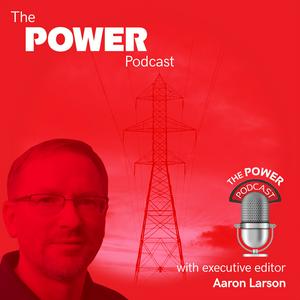196. Building ChatGPT for the Power Industry: EPRI Leads the Way
More than 100 of the world’s largest energy companies are betting that artificial intelligence (AI) will revolutionize how electricity gets made, moved, and managed. But they’re not waiting for Silicon Valley to build it for them—they’ve taken matters into their own hands through an EPRI-led consortium.
That initiative is the Open Power AI Consortium, which EPRI launched in March 2025 to drive the development and deployment of an open AI model tailored for the power sector. According to its mission statement, the Open Power AI Consortium “aims to evolve the electric sector by leveraging advanced AI technologies to innovate the way electricity is made, moved, and used by customers. By fostering collaboration among industry leaders, researchers, and technology providers, the consortium will drive the development and deployment of cutting-edge AI solutions tailored to enhance operational efficiencies, increase resiliency and reliability, deploy emerging and sustainable technologies, and reduce costs while improving the customer experience.”
“We’re really looking at building an ecosystem to accelerate the development and deployment, and recognizing that, while AI is advancing rapidly, the energy industry has its own unique needs, especially around reliability, safety, regulatory compliance, and so forth. So, the consortium provides a collaborative platform to develop and maintain domain-specific AI models—think a ChatGPT tailored to the energy industry—as well as sharing best practices, testing innovative solutions in a secure environment, and long term, we believe this will help modernize the grid, improve customer experiences, and support global safe, affordable, and reliable energy for everyone,” Jeremy Renshaw, executive director for AI and Quantum with EPRI, said as a guest on The POWER Podcast.
Among the consortium’s members are some of the largest energy companies in the world, including Constellation, Con Edison, Duke Energy, EDF, Korea Electric Power Corp. (KEPCO), New York Power Authority (NYPA), Pacific Gas and Electric Co. (PG&E), Saudi Electricity Co., Southern Company, Southern California Edison, Taiwan Power Co., and Tennessee Valley Authority (TVA). It also includes entities like Amazon Web Servies (AWS), Burns and McDonnell, GE Vernova, Google, Gulf Cooperation Council (GCC) Interconnection Authority, Korea Hydro and Nuclear Power (KHNP), Khalifa University, Microsoft, Midcontinent Independent System Operator (MISO), PJM, Rolls-Royce SMR, and Westinghouse Electric Co.
“For many years, the power industry has been somewhat siloed, and there were not many touch points or communication between global utilities, technology companies, universities, and so forth. So, this consortium aims to facilitate making new connections between these important and impactful organizations to increase collaboration and information sharing that will benefit everyone,” Renshaw explained.
EPRI, together with Articul8 and NVIDIA, has already developed the first set of domain-specific generative AI models for electric and power systems aimed at advancing the energy transformation. Although the technology has not been released publicly, it will be made available soon as an NVIDIA NIM microservice for early access. This development sets the foundation for more to come.


